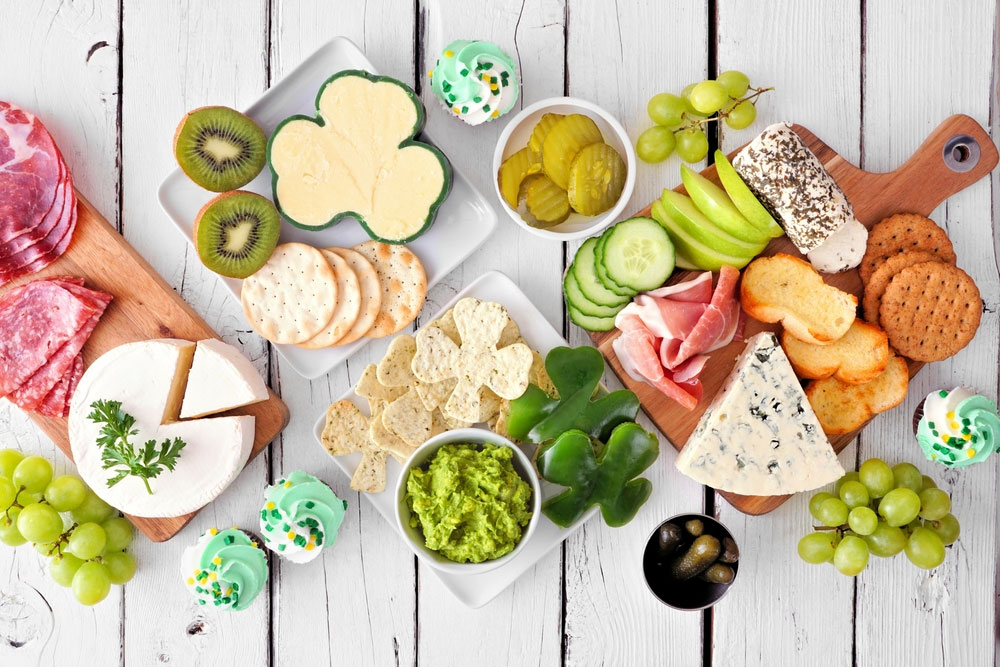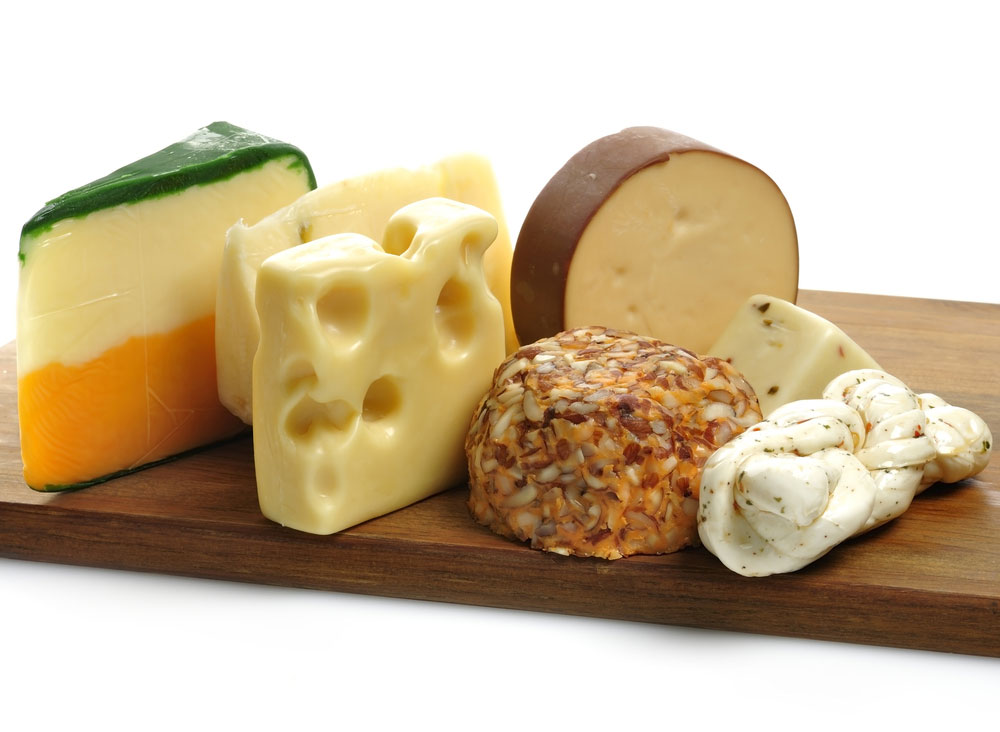Cheddar: The King of Irish Cheeses
Cheddar cheese, sometimes known as the “King of Irish Cheeses,” is a well-known and famous cheese from Ireland’s rich cheese-making legacy. Irish cheddar, with its smooth texture and distinct flavor, is made with painstaking care and experience.
Irish cheddar is available in a variety of flavors, from mild and creamy to sharp and aged. The production of cheese begins with high-quality milk sourced from cows grazing on Ireland’s lush green pastures. The milk is carefully cultured and curdled, and the curds are sliced and pressed to remove whey, forming the cheese into distinctive blocks or wheels.
The maturing procedure is critical to the development of Irish cheddar’s distinct flavors and textures. Some cheeses are matured for several months, resulting in a milder, creamier cheese with a subtle tang. Others are aged for longer periods of time, allowing flavors to develop and textures to become flaky and strong. The maturing procedure is frequently carried out in cool, regulated conditions, where the cheese develops its character and complexity.
Irish cheddar is a versatile cheese that may be used in both traditional and modern cuisines. Because of its creamy and smooth texture, it melts well and is great for grilled cheese sandwiches, macaroni and cheese, and savory pies. Its distinctive flavor enhances salads, cheese platters, and substantial soups.
Irish cheddar, whether eaten alone or in recipes, appeals to a wide range of tastes and preferences. Cheddar cheese, from its humble beginnings to its status as a symbol of Ireland’s cheese-making tradition, is a monument to the craftsmanship and passion of Irish cheesemakers.
Gouda: A Taste of Dutch Influence
The Dutch cheese Gouda has had a great influence on Ireland’s cheese culture. Gouda has found its way into Ireland’s cheese-making arsenal, giving a touch of Dutch influence to the country’s cheese offerings with its signature yellow hue and nutty flavour.
Irish Gouda has a distinct flavor, blending traditional Dutch cheese-making techniques with the experience and innovation of Irish cheesemakers. The procedure starts with high-quality cow’s milk procured from local farms, ensuring the best and freshest ingredients. The milk is properly pasteurized and cultured before being used to make cheese.
The smooth and supple texture of Irish Gouda is accented by small, distributed eyes or holes throughout the cheese. The maturing process is critical in the development of the tastes and nuances of Irish Gouda. Some kinds are aged for a shorter period of time, producing a gentler and creamier cheese, whereas others are aged for a longer period of time, producing a more prominent and powerful flavor profile.
The combination of native flavors and the craftsmanship of Irish cheesemakers distinguish Irish Gouda. Some varieties may contain herbs, spices, or even notes of local Irish whiskey, imparting a bit of Irish character to the cheese.
Irish Gouda is a versatile cheese that may be used in a variety of dishes. It gives sandwiches a lovely smoothness and melts beautifully in grilled cheese. On a cheese board, it goes nicely with fruits, nuts, and crackers, and it can be grated or shredded for use in dishes.
The fusion of Dutch heritage and Irish invention has produced a remarkable cheese that honors both cultures. Irish Gouda is a monument to Ireland’s cheese culture’s diversity and innovation, delivering a taste of Dutch influence that has been distinctively fashioned by the knowledge and flavors of Irish cheese makers.
Blue Cheese: A Tangy and Bold Delight
Irish blue cheeses are a mesmerizing surprise for cheese lovers seeking a robust and savory adventure. These cheeses, made with care and knowledge, provide a distinct sensory experience that is both creamy and tangy.
Irish blue cheese is made from high-quality cow’s milk collected from local Irish farms noted for their rich and nourishing dairy. The milk is pasteurized carefully before being inoculated with the mold Penicillium roqueforti, which gives the cheese its distinctive blue veins. The cheese is then aged in a temperature-controlled area to allow the tastes to develop and the blue mold to thrive.
As the cheese ages, it transforms into a rich, crumbly texture with a nuanced flavor profile. The flavor of Irish blue cheeses can range from creamy and mild with slight undertones of blue to strong and acidic with a prominent sharpness. The blue veins that run through the cheese create bursts of taste that become more intense as the cheese ages.
Irish blue cheeses are well-known in the culinary world for their flexibility. They can be eaten alone, crumbled over salads, or mixed into a variety of meals. Their robust and tangy flavors complement fruits like pears or grapes, and they can be served with honey, almonds, or crusty bread for a lovely combination of textures and sensations.
The passion and expertise of the cheesemakers, who meticulously nurture the cheese during the aging process, distinguishes Irish blue cheeses. The end result is a strong and zesty treat that enchants the palate and leaves an indelible memory.
Irish blue cheeses provide a one-of-a-kind and remarkable taste experience for both cheese experts and daring food enthusiasts. These cheeses are a monument to Ireland’s cheese culture and commitment to producing great and distinctive kinds, with their powerful flavors, complex characteristics, and crumbly textures.

Farmhouse Cheeses: A Taste of Terroir
Farmhouse cheeses in Ireland exemplify terroir, capturing the aromas of the area as well as the artistry of skilled artisans. These cheeses, meticulously made on small-scale farms, provide a true flavour of Ireland.
The abundance of natural resources in Ireland is the foundation of farmhouse cheeses. The rich green pastures of the nation, nurtured by abundant rainfall, provide perfect grazing grounds for cows, sheep, and goats. The animals eat a wide variety of grasses and plants, which infuses their milk with various smells and scents.
Cheese makers take delight in their work on these small-scale farms. They use traditional processes passed down through generations to delicately turn high-quality raw milk into excellent cheeses. Each wheel of cheese is a monument to their experience and dedication, thanks to their attention to detail and hands-on approach.
What distinguishes farmhouse cheeses is their affinity to the surrounding landscape. The flavors and features of the cheese are influenced by the distinct terroir, which includes soil, climate, and microorganisms. The resulting cheeses represent the region’s distinct subtleties, whether it’s the Atlantic’s coastal notes, the earthiness of the undulating hills, or the flowery hints of wildflowers.
Every farmhouse cheese has a tale to tell, capturing the flavors and traditions of its place of origin. Each variation shows the specific features of its location, from creamy cow’s milk cheeses with buttery undertones to acidic goat’s milk cheeses with a tinge of herbaceousness.
Farmhouse cheeses are a celebration of tradition and skill. They personify sustainability and support for local farmers and craftspeople. When tasting these cheeses, one can sense the love and care that goes into their creation, as well as the pride of the farmers who care for the land and their animals.
Exploring farmhouse cheeses takes you on a gourmet trip through Ireland’s different landscapes. Each cheese delivers a distinct taste experience that reflects the beauty and richness of the Irish countryside, from the craggy coastlines to the rolling green hills.
Goat and Sheep Cheeses: A Niche Worth Exploring
Goat and sheep cheeses stand out as specialities worth studying in Ireland’s rich cheese culture. These different variations are a fascinating break from regular cow’s milk cheeses, offering cheese lovers a variety of distinct flavors and textures to relish.
Goat cheeses have acquired appeal among cheese connoisseurs due to their characteristic tanginess and creamy smoothness. The milk from Irish goats, which is generally produced from small-scale farms, gives these cheeses a distinct flavor. Each kind shows the recognizable essence of goat’s milk, whether it’s a fresh and mild chèvre or a more matured and sophisticated goat cheese.
Sheep cheeses, on the other hand, have a flavor profile that is rich and powerful, enticing the palette. The milk from Irish sheep that graze on the lush pastures of the countryside gives these cheeses a special sweetness and depth. Each mouthful shows the genuine essence of sheep’s milk, from the crumbly and nutty notes of a young pecorino to the silky and powerful flavors of a mature sheep cheese.
Not only do goat and sheep cheeses have a distinct flavor, but they are also extremely versatile. They can be consumed in a variety of ways, from fresh and spreadable cheeses that match well with crusty toast to firm and aged cheeses that are great for grating over pasta or salads. Their diverse flavors can offer complexity and depth to both savory and sweet meals.
Exploring goat and sheep cheeses is an adventure into the world of lesser-known but enticing flavors. It provides an opportunity to appreciate the uniqueness of Irish cheese culture as well as the passion of the farmers who care for these particular creatures. Goat and sheep cheeses offer a distinct and remarkable taste experience, whether savored on their own, as part of a cheese board, or incorporated into delectable recipes.
Accept the niche of goat and sheep cheeses, and you’ll discover a whole other depth of flavors that display Ireland’s cheese culture’s richness and diversity. Allow these outstanding cheeses to transport you to the rolling green meadows and picturesque scenery that contribute to their exceptional taste.
Finally, Ireland’s cheese culture is a hidden treasure waiting to be uncovered. Irish cheeses offer a delicious assortment of flavors, textures, and tales, ranging from conventional cheddar to inventive concoctions. So, on a taste journey and discover the delights of Irish cheese, indulging in the passion and skill that make each bite genuinely unique.







